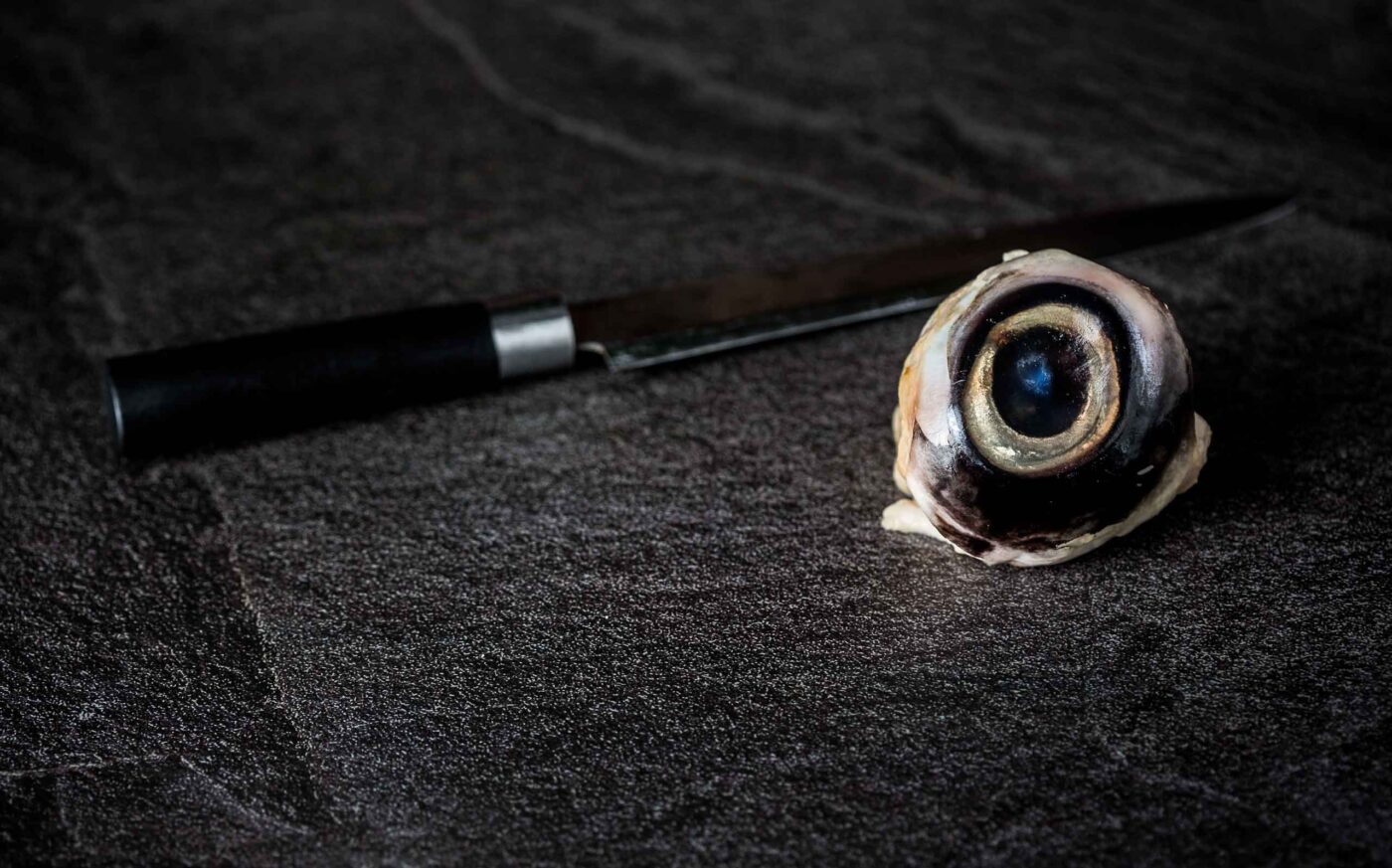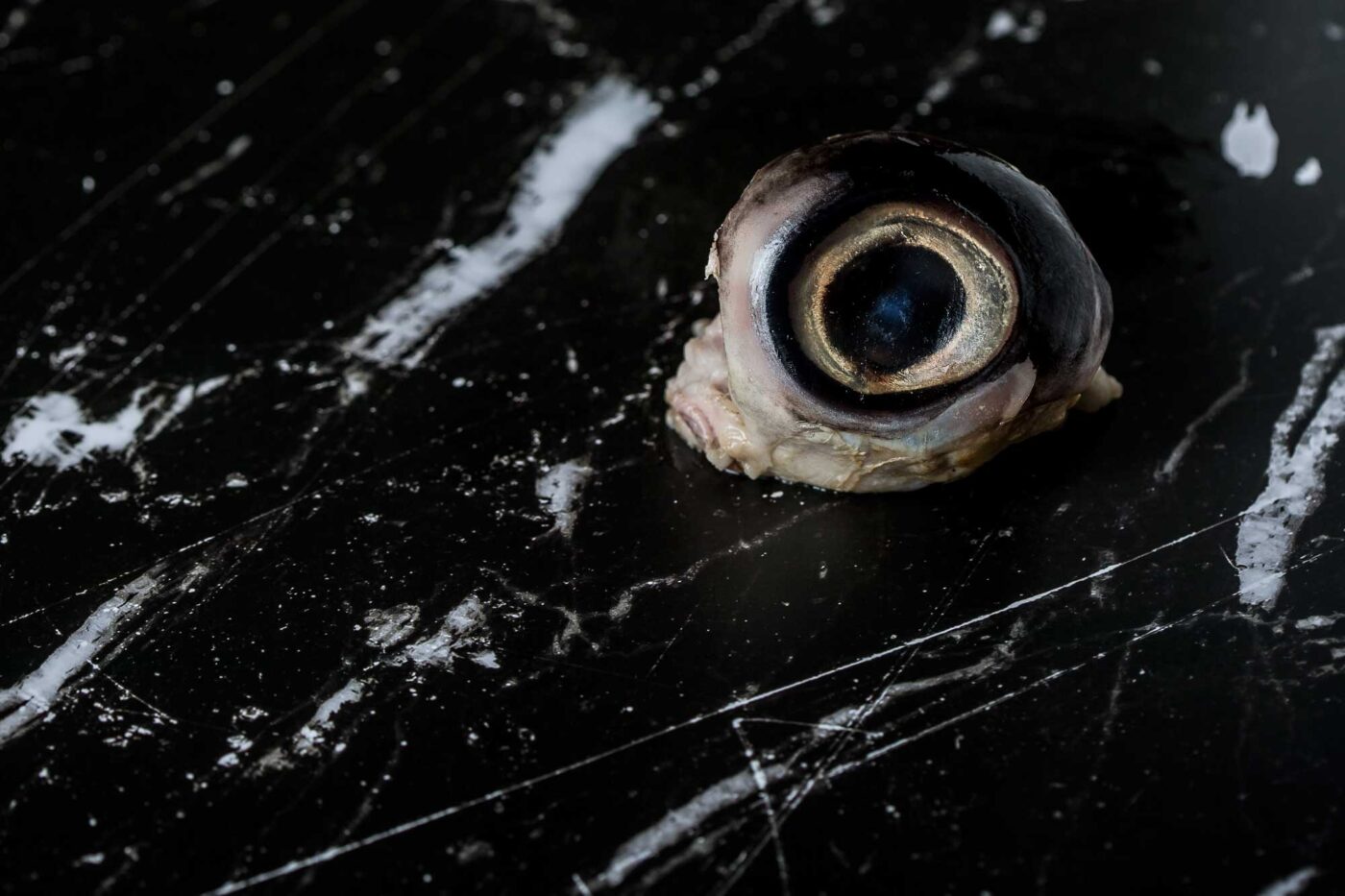Tuna eyes: the ultimate delicacy
Summary:

A logbook by Sensei Hiroshi Umi.
In my homeland they call it mebachi, for biologists it is Thunnus obesus, and in the waters of Spain it is known locally as patudo. And we have fished it out for the blog because it has another name which perfectly fits this week’s entry: big-eye tuna. Because we will be talking about eyes, the latest item of offal to find its way into these culinary latitudes of our titan of the sea.
Tuna with their big, inexpressive dolls’ eyes, which have taken in so much water, so many nautical miles of migration, and are perfectly designed for undersea vision, to spot killer whales on the prowl in the low light levels underwater. They have no need for eyelids, as they do not need to lubricate anything (the cornea is in permanent contact with the water), and the lenses of our beloved tuna are spherical, slightly flattened, with great refractive power.
The Mr Magoo of the sea
I am no expert ophthalmologist, it must be said, but thanks to my years of experience discussing tuna-related facets of marine biology, I do know that within its optical set-up the iris does not contract, and so it cannot close its pupil (like a photographic diaphragm) if more light enters when it ventures to the surface of the sea. To avoid being blinded or overexposed, its cones and rods are highly versatile, and modulate their form.
One could nonetheless imagine that the bluefin tuna is a real Mr Magoo. At least when young, with eyes that are almost monstrously out of proportion to its body. Which is why in my beloved homeland of Japan they paint black and white stripes on the nursery tanks so they do not hurt themselves by bumping into the walls (the same trick used at the Fuentes Bluefin tuna farms: as black-and-white as the kit of the local Cartagena football team). If we gave them glasses, tuna might make wonderful readers!
Tuna eyes, the discarded cut
We have never taken a positive view of tuna eyes. They have never been marketed in Japan, and where they have been delivered via certain channels, it has been as the result of a specific order placed by a chef with an urge for adventure, sorcerer’s apprentices for whom we will be ever grateful.
I remember the fishermen and seafarers on board tuna-fishing ships preparing a kind of shiokara, a salted, fermented dish using the gelatinous meat just behind the eyeball. Shiokara is a nose-to-tail dish making use of various bits and bobs of fish and seafood, with the characteristic appearance of a viscous paste of an indescribable brown in colour. These were not, though, marketable ingredients. What we did eat was the eyeball of the dog’s tooth bream. Traditionally, the eyes have been discarded. No one paid them any attention, even to be transplanted into a Blade Runner replicant. Not even to liven up a stock, because as with the bladder, they made them bitter.

Object of desire of innovative chefs
But it turns out that the world of haute cuisine has some surprises in store. Diego Guerrero, the mischievous alchemist who plays around at DsTAGE, has ventured into the field of tuna collagen and creamed eyes. He vacuum-packs and infuses them. They melt like a child’s ice cream in August. The bone is left as a lonely, naked nucleus. This condensed substrate is filtered, blended and emulsified, for the collagen and fat of the eyeball to give up all their secrets. The result of reducing all this essence is a kind of dense butterscotch. Congratulations.
But it is not only this piratical chef from Vitoria who has dared to stare directly into the eyes of our prized fishy torpedoes. The great Julián Mármol, helmsman of Yugo The Bunker whom we have already visited along these digital highways, has also taken up the challenge. As has Miyama, an outstanding Japanese restaurant which has two premises in Madrid, and is of unquestioned fundamentalism.
Would you like any further clue, another nod and a wink in this regard? Then head over to La Sopa Boba, in Alpedrete. Behind its doors Fernando Limón orchestrates a creative kitchen with some strident notes. Alongside the most traditional tartare, before you can blink he will serve you up tuna eyes offering a kaleidoscopic perspective on the ocean depths…
